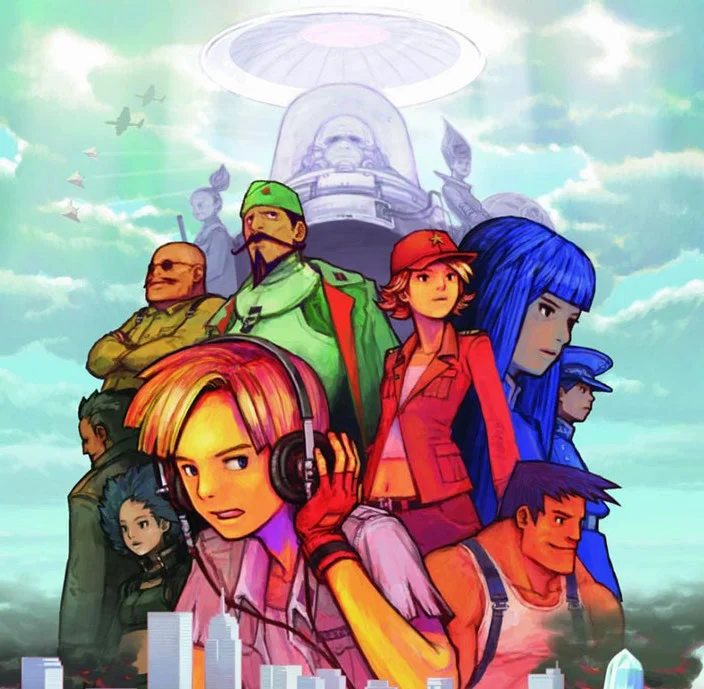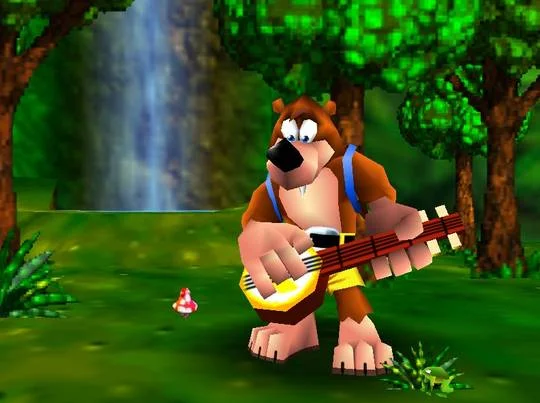Classic Comeback | Advance Wars: Dual Strike
Double the Screens, Double the Fun
Nintendo is not known for its strategy games. Across more than forty years of video game development, the company has never delved too deeply into the strategy genre. But while Nintendo themselves have rarely attempted them, one of their closest allies has set the bar for console-bounded strategy games. After assisting in transmogrifying Nintendo’s arcade hits into launch titles for the NES, close Nintendo affiliate Intelligent Systems released Famicom Wars in 1988. After the series’ Western debut in 2001’s Advance Wars, the series found a new home and a new identity. Future games in the Wars series would retain the Game Boy Advance’s namesake, even when they left the GBA and doubled their screens.
It’s here that I became introduced to the series, in my high school days. I had borrowed a cartridge – one which I later bought from him and still have today – of 2005’s Advance Wars: Dual Strike. The game was entrancing from the get-go; many a car trip and idle hour were spent being engrossed in its turn-based twists.
Look at the colours. SO MANY BRIGHT COLOURS.
But Dual Strike represents something different today than it did more than a decade ago. Since its release, only one other game in the Wars series has been released (Battalion Wars and its sequel don’t count, damn it). Advance Wars: Dark Conflict, known as the way cooler Days of Ruin in North America, was directly targeted towards its Western audience. The strategy was tighter, and the story with higher stakes, but it just wasn’t the Advance Wars I’d come to love. What stung the most is that the series’ vibrant and colourful imagery was replaced with the ‘brown on grey’ trend that hung over 2000s video game visual design like a plague.
Dark Conflict also placed an emphasis on balance for Westerners, but here’s the rub: Advance Wars was never about balance. It was important, to be sure, but never quite the reason I got so stuck into it. What drove the series’ identity was its aesthetic, and its fun factor. Not only does Dual Strike retain what made the series popular in the first place, but it doubles down on it. Advance Wars 2 is the peak of the series for many of its fans, but Dual Strike is the most fun – plain and simple.
Take the game’s units. 24 of them all around, sitting just shy of Dark Conflict’s 26. Dual Strike’s units, however, boast some incredible niches; Piperunners, for example, are the series’ answer to its lust for railroad guns but lack of railroads. They can only move along one (impassable) terrain type – resource pipelines – but have mean firepower. The thing is, you’ll absolutely never use them because you almost never find pipes on a map connected to a factory. It’s a unit that exists for a single niche purpose, a purpose that the Rockets unit already provides! So why is the Piperunner even in the game? It looks cool and it’s fun to use.
Tell me these absolute units aren’t awesome
Naval and Air theatres aren’t immune to this ‘fun factor’ either. The Stealth bomber unit functions identically to the Submarine – both units can become invisible to all but adjacent and recon units – but it flies. The Black Boat zips along the water and repairs friendly naval units with its giant clamp hands. Neither of these units were outright necessary or even fill a hole in Dual Strike’s roster. So, why are they here? They look cool and they’re fun to use. Popping a wounded Tank force with a sneaky stealth(ed) bomber elicits a cackle from yours truly when it’s done just right. Try finding a boat with hands in a ‘balanced’ strategy game!
In war, though, it’s never just about the units. There are always men pulling the strings behind the scenes, orchestrating their symphony of war. Advance Wars is no different, but it comes with a twist: There are women pulling the death strings, too! The second point of Advance Wars’ pincer charm offensive comes from its wide range of playable-ish commanding officers. Dual Strike’s roster of super-powered COs stretches to a series high of 27, with some being returning characters from previous games. Most of these encore appearances make no formal appearance in Dual Strike’s campaign mode, or even its extended story! Clones don’t count.
Make it double
New COs range from making use of new features to straight-up reskins of older ones. And those older ones can be unlocked as well! Why? Because sometimes you prefer being an absolute unit in a biker costume than a robot LARPer. But as if to say that we are like a little baby, Dual Strike tells us to ‘watch this’ and pulls out its namesake gameplay mechanic. Instead of using just one CO like in other Advance Wars games, Dual Strike has you using two. At the end of your turn, you can swap between them and their abilities for the next turn. But if both COs’ power meters are full, you can take two turns in a row and unleash both of their powers in a (wait for it) Dual Strike! There are a lot of fans who decry the tag-team dynamic as unnecessarily bombastic, but they forget that this is a series that’s all-too-cheery about the business of war. Therefore, I retort: Who cares? It’s satisfying and has some killer tunes to go with it.
All this is saying nothing of Dual Strike’s other fantastic qualities: Ryo Hirata’s character designs are probably my all-time favourites, and ones that I compare favourably to Kazuya Nuri’s Ace Attorney designs. Yoshito Sekigawa’s soundtrack compliments the iconic cute visuals and flippant gameplay perfectly. Said visuals and sound look and sound better than ever on the DS hardware, which went a long way in it being the first ‘must-have’ for the system.
Would Advance Wars have gotten anywhere without these things? Debatable. Would it have commanded and conquered hearts and minds without its fun factor? Out of the question. It boggles the noggin that anybody could think that Dark Conflict is better simply because it’s more balanced. Advance Wars hit its peak with Dual Strike because it was the last game to remain true to the series’ soul, and that old cartridge still gets passed around on plane trips to this day. If you don’t like it, go to Blue Moon.









